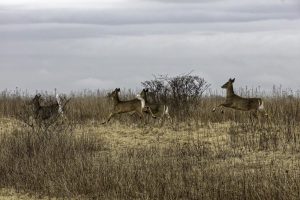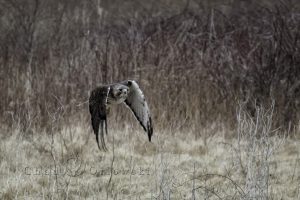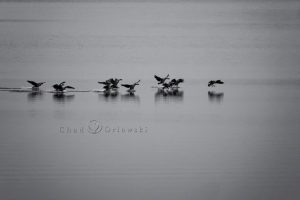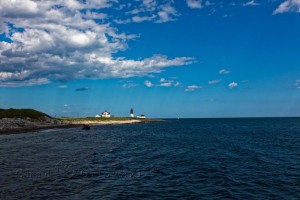Second Best?
- At February 19, 2018
- By Firstmate
- In Canon EOS 5DS, DxO Optics Pro, Nik Software, RI, Sharpness
 0
0
 This past winter has cast upon me the challenge to continue my growth by both studying and practicing the art of photography. I have done this with surprising gusto because I did not think it within me. Anyway, I revisited Vincent Versace’s arduous method of producing photographs for “fine art” printing. Vincent’s knowledge of the field has been a guide worthy of a king’s ransom. But, for this poor soul at this stage of my life, I find it far beyond my capabilities and aspirations. However, I have adopted his many insights as an ideal to be aspired to and then use these as a measure to adapt to the current capacities I possess.
This past winter has cast upon me the challenge to continue my growth by both studying and practicing the art of photography. I have done this with surprising gusto because I did not think it within me. Anyway, I revisited Vincent Versace’s arduous method of producing photographs for “fine art” printing. Vincent’s knowledge of the field has been a guide worthy of a king’s ransom. But, for this poor soul at this stage of my life, I find it far beyond my capabilities and aspirations. However, I have adopted his many insights as an ideal to be aspired to and then use these as a measure to adapt to the current capacities I possess.
In counterpoint to Vincent I have also been studying the method of practical photography by Bryan Peterson whom I find as equally adept at creating worthy photographs of the lived world. Bryan’s techniques are capable of being easily utilized in one’s own work flow, at least in actually taking the photograph without any attention to post-processing (in other words, taking a great photo before all else).
This dialectic has left me in the creative tension of trying to choose what best works for me and yet produce the best possible photo I can of a particular situation.
That being said, (i.e., the studying part), I have also met the challenge of getting outside this winter to shoot in conditions with are winter-ish. I must say I am proud of myself, and have actually enjoyed the experience of living on the edge of endurance (a wonderful aside is that it has allowed me to feel completely alive as I used to feel when I was younger and facing the elements).
All of the above leads to the point that I am trying to make. Both of the posted shots are critical existential moments of movement of wild life, i.e, deer running to escape something, and a hawk trying to find a meal. Both of these moments actually occurred in split seconds of the moment, meaning I had to absolutely have the right settings in my camera and the camera had to be responsive to my needs to capture the in-focus, properly framed shot. 
I almost had it! That was my conclusion. Both of the posted shots were hand held and rapidly captured based on subject movement. I thought I was on automatic focus, but there clearly was not a really sharp image captured in both situations. Maybe the subjects were moving too quickly. Maybe not. My point is: You must have responsive equipment based on what you are trying to capture. You must allow for the elements (heat, cold, moisture, fog, light, etc). You have to be ready with your settings based on your anticipated need.
The first photo was taken at Sachuest Point National Wildlife Preserve in Rhode Island at a split second when the deer suddenly appeared. It was taken with a Canon 5 DS, EF100-400mm f/4.5-5.6L IS II USM @ 255mm, f/11, 1/640″, ISO 1000, DxO Optics Pro 11, ACR, Photoshop CC2018.
The second photo is of a Red Tailed Hawk taking off from a field directly in my direction. It was taken with a Canon 5 DS, EF100-400mm f/4.5-5.6L IS II USM @ 400mm, f/11, 1/640″, ISO 2500, post processed with ACR, DxO Optics Pro 11, Color Efex Pro.
Almost Getting It
This did not happen in my last shooting experience. This occurred today at the time of near sun set on a cloudy, windless day, in early December. Birds, geese and ducks were active or flocking, and the opportunities were happening hard and fast in things to photograph. All of a sudden, above me were several Canadian Geese coming in for a water landing. I quickly made sure my camera settings were adequate, and began making a series of shots as the geese approached and then landed. Surely, I said to myself, I must have at least one good photograph.
Unfortunately, if one considers sharpness as a critical element to a good photograph, I did not achieve my goal.
I offer the best of the lot for consideration and analysis in this blog post. I thought the lighting and form/movement/composition of the shot were what I wanted, and I am truly happy with those, but for some reason my camera settings were not adequate to achieving a sharp photograph. Maybe all things being equal, the lighting conditions were at the edge of what was achievable when you consider the fast movement of the landing geese. I will analyze this set of lighting, movement, and camera settings further to refine them so as to get a sharp shot.
The currently posted shot was taken on Occupexatuxet Cove using a Canon 5 DS, EF100-400mm f/4.5-5.6L IS II USM lens @ 400mm, f/8, 1/160″, ISO 1000, using DxO Optics Pro 11 for post processing, with Adobe Camera Raw, Photoshop CC(2018), and Silver Efex Pro.
Blaming the Camera
- At July 24, 2015
- By Firstmate
- In Canon EOS 5DS, Narragansett, Sharpness
 0
0
The last 2-3 months have been difficult for me to get the right mindset for photography. After my trip to Germany in Spring where I took a ton of photos and a small minority were sharp and descent, I became disheartened as to why I still struggle with taking sharp photos. I even tried recalibrating my Canon lenses (24-105mm L; 70-200 L) but these appeared to be fine.
I lost faith in my Canon 5D Mark II and while this may sound trite I blamed it to a degree, even though I knew I also was at fault with poor technique. I had to find my way out of this state of dismay. Then I read about Canon’s new 5DS camera which has 50 megapixels and was geared to take really sharp photos. I decided to get this camera by selling my 30D and 5D Mark II cameras, figuring that if I still got less than sharp photos the camera could not be blamed. In addition, the 5DS had other features which I could grow into,e.g., setting aspect ratio.
The photo in this post is of Point Judith Lighthouse in Narragansett, RI, taken on a mostly sunny day in mid afternoon summertime, less than the perfect shooting time advocated by professionals, but right up my alley (read post, Mixed Metaphor). I had taken several photos of this lighthouse getting used to my new camera, but this one was descent since clouds had rolled in to provide some shading to much of the seascape, but still keeping the lighthouse lit, so to say. Settings were manual mode, f22, 1/125, ISO 100; Canon 24-105 mm L @ 32mm. Little post processing was done to the photo. I believe the 5DS may be a keeper. Note: there are some slanting vertical “lines” in the blue sky between the lighthouse and white clouds; this is a result of the camera catching the sun’s rays in the suddenly clouded/shaded foreground.

 While my comfort and confidence levels continue to grow in taking photographs, the results are not always up to what I expected. Obviously, the elements of a great shot under a range of varying conditions is challenging, but I, nevertheless expect to at least get a good quality shot, at least with the top-notch, Canon equipment I use.
While my comfort and confidence levels continue to grow in taking photographs, the results are not always up to what I expected. Obviously, the elements of a great shot under a range of varying conditions is challenging, but I, nevertheless expect to at least get a good quality shot, at least with the top-notch, Canon equipment I use.
Recent Comments